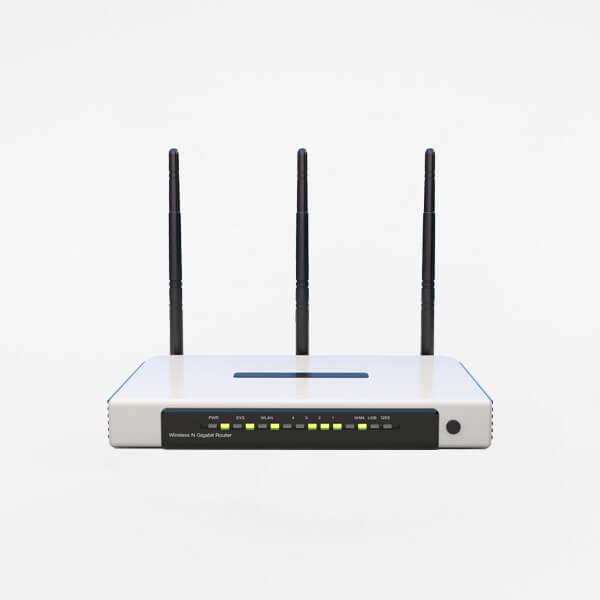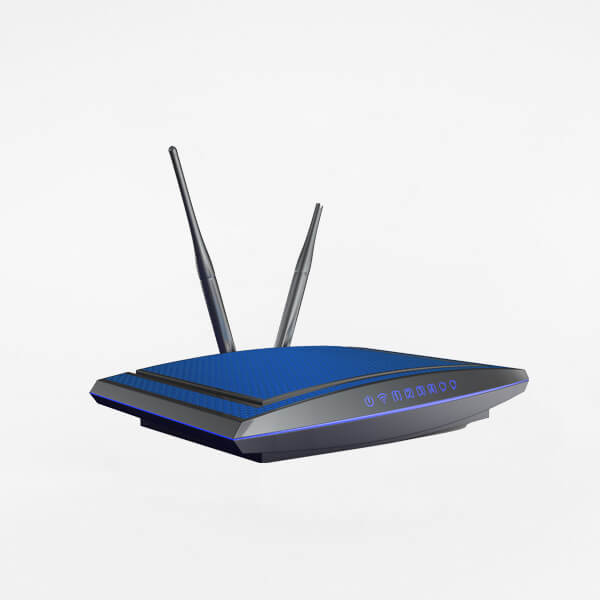Specifications
Interface
• 24-port 10 / 100BASE-TX
• 2 combo port 10/100 / 1000BASE-T / 100/1000 SFP
Console Port
RJ-45
Performance
• Switching Matrix: 8.8 Gbit / s
• Speed ??forwarding 64-byte packets: 6,6 Mpps
• The size of MAC-address table: 16K
• SDRAM for CPU: 128 MB DDR2
• packet buffer: 1.5 MB
• Flash-Memory: 32 MB
• Jumbo-frame: 12 Kb
Indicators
• Power (per device)
• Console (on the device)
• Link / Active / Speed ??(per port)
Software
Stacking
• Virtual Stacking D-Link Single IP Management
• Combining a virtual stack of up to 32 devices
Level 2 functions
• MAC address table: 16K
• Flow Control
- 802.3x Flow Control
- Prevent blocking HOL
• Jumbo-size frames to 12K bytes
• Spanning Tree Protocols
- 802.1D STP
- 802.1w RSTP
- 802.1s MSTP
• BPDU Filtering
• Root Restriction
• Loopback Detection
• Link Aggregation
- Compatible with 802.1AX and 802.3ad
- Max. number of groups - 13, 8 ports per group
• Port Mirroring
- Supports 1 Mirroring group
- Modes: One-to-One, Many-to-One, Flow-based (ACL)
- Technology Ethernet Ring Protection Switching (ERPS)
- L2 Protocol Tunneling (L2PT)
Multicast Layer 2
• IGMP Snooping
- IGMP v1 / v2 snooping, IGMP v3 awareness
- Support Groups 1024
- IGMP snooping Fast Leave-based port / host
- Report Suppression
• MLD Snooping
- MLD v1, MLD v2 awareness
- Supports 1 K groups
- MLD Snooping host-based
- Fast Leave
• IGMP Authentication
• IGMP / MLD Proxy Reporting
VLAN
• 802.1Q VLAN
• VLAN Group
- Max. 4K VLAN
• VLAN-based port
• VLAN MAC-based address
• GVRP
• 802.1v VLAN-based protocol
• VLAN Trunking
• Double VLAN (Q-in-Q)
- Q-in-Q port-based
- Q-in-Q Selective
• ISM VLAN
• VLAN Translation
• Voice VLAN
Features 3 levels
• IPv6 Neighbor Discovery (ND)
Quality of Service (QoS)
• Bandwidth Management
- Based on the port (incoming / outgoing, in increments of up to 8 kbit / s)
- On the basis of the flow (incoming / outgoing, in increments of up to 8 kbit / s)
- For the output queue (in increments of 8 kbit / s)
• 8 queues per port
• DSCP
• 802.1p
• Processing Queue
- Strict Priority
- Weighted Round Robin (WRR)
- Strict + WRR
• Three color marking
- TrTCM
- SrTCM
Quality of Service (QoS)
• CoS based on:
- Port Switch
- 802.1p Priority Queues
- VLAN ID
- MAC-address
- Ether type
- TOS
- DSCP
- The type of protocol
- TCP / UDP port
- Class IPv6 traffic
- Tags IPv6 flow
- Contents of the package, a user-defined
• Support for the following streams
- Set the 802.1p priority tags
- Tagging TOS / DSCP
- Statistics flow
Access Control Lists (ACL)
• Up to 1024 access rules
• ACL on the basis of
- Port Switch
- 802.1p priority
- VLAN ID
- Ether type
- IPv4 / IPv6-Address
- DSCP
- The type of protocol
- Non-TCP / UDP port
- Class IPv6 traffic
- Tags IPv6 flow
- Contents of the package, a user-defined
• ACL on the basis of the time
• Statistics ACL
• CPU interface filtering
Security
• SSH v1, v2
• SSL v1, v2, v3
• Port Security
• Up to 64 MAC-addresses per port
• Protection from the broadcast / multicast / unicast storm
• Segmentation of traffic
• IP-MAC-Port Binding (IMPB)
- Check the ARP packets
- Check the IP packet
- DHCP Snooping
• D-Link Safeguard Engine
• Protection against unauthorized DHCP servers
• Filtering DHCP clients
• Prevention of ARP Spoofing
• Prevent attacks BPDU
• Filtering NetBIOS / NetBEUI
• Prevention of DoS attacks
• L3 Control Packet Filtering
AAA
• 802.1X
- Based Access Control port
- Based Access Control host
- Dynamic VLAN assignment
• Dynamic allocation policies: VLAN, ACL or QoS
• Access Control MAC-based (MAC)
- Based Access Control port
- Based Access Control host
- Based Access Control port
- Based Access Control host
• Microsoft® NAP (IPv4 / v61)
- Support for 802.1X NAP
- Support for DHCP NAP
• Guest VLAN
• RADIUS Accounting
• RADIUS (IPv4 / v61)
• TACACS
• TACACS +
• XTACACS +
• Control of trusted hosts (Trusted Host)
OAM
• Diagnosis cable
• 802.3ah Ethernet Link OAM
• Dying Gasp
• 802.1ag Connectivity Fault Management (CFM)
• 802.3ah D-Link extension: D-Link Unidirectional Link Detection (DULD)
DDM (Digital Diagnostics Monitoring)
Yes
Green Technology
• D-Link Green 3.0: The power saving function
• Energy savings at the expense of PoE on the basis of time (in the case of models supporting PoE)
Management
• Web-interface (supports IPv4)
• Command Line Interface (CLI)
• Telnet-Server / Client (supports IPv4)
• TFTP-client (IPv4)
• FTP-client (IPv4)
• Zmodem
• Logging of input commands
• SNMP v1 / v2c / v3
• SNMP Traps
• System Log
• RMON v1
- Support Groups 1, 2, 3, 9
• RMON v2
- Support group ProbeConfig
• LLDP
• 802.1AB
• LLDP-MED
• BootP / DHCP-client
• DHCP automatically
• DHCP Relay (Supports IPv4)
Management
• DHCP Option 12
• DHCP Relay Option 60
• DHCP Relay Option 61
• DHCP Relay Option 82
• Tagging PPPoE Circuit-ID
• Flash File System
• SNTP
• Monitoring the CPU
• Monitoring Memory
• Debug commands
• Encryption password
• Password recovery
• Support for Microsoft® NLB (Network Load Balancing)
• Ping (support IPv4 / v61)
• Traceroute
• Multiple IP Interface
MIB
• RFC 1065, 1066, 1155, 1156, 2578 MIB Structure
• RFC 1212 Concise MIB Definitions
• RFC 1213 MIB II
• RFC 1215 MIB Traps Convention
• RFC 1493, 4188 Bridge MIB
• RFC 1157, 2571-2576 SNMP MIB
• RFC 1901-1908, 3418, 3636, 1442, 2578 SNMPv2 MIB
• RFC 271,1757, 2819 RMON MIB
• RFC 2465 IPv6 MIB
• RFC 2466 ICMPv6 MIB
• RFC 2737 Entity MIB
• RFC 4293 IPv6 SNMP Mgmt Interface MIB
• Private MIB
• RFC 3289 DIFFSERV MIB
• RFC 2021 RMONv2 MIB
• RFC 1398, 1643, 1650, 2358, 2665, 3635 Ether-like MIB
• RFC 2668 802.3 MAU MIB
• RFC 2674, 4363 802.1p MIB
• RFC 2233, 2863 IF MIB
• RFC 2618 RADIUS Authentication Client MIB
• RFC 4022 MIB for TCP
• RFC 4113 MIB for UDP
• RFC 3298 MIB for Diffserv
• RFC 2620 RADIUS Accounting Client MIB
• RFC 2925 Ping & Traceroute MIB
• Backup and restore settings
• Upload and download files via TFTP
• Trap MIB
Standard IETF®
• RFC 768 UDP
• RFC 791 IP
• RFC 792 ICMPv4
• RFC 2463, 4443 ICMPv6
• RFC 4884 Extended ICMP messages to support Multi-Part
• RFC 793 TCP
• RFC 2474, 3260 Determination of the DS field in the header of IPv4 and IPv6
• RFC 1321, 2284, 2865, 3580, 3748 Extensible Authentication Protocol (EAP)
• RFC 2571, RFC2572, RFC2573, RFC2574 SNMP
• RFC 826 ARP
IPv6
• RFC 1981 Path MTU Discovery
• RFC 2460 IPv6
• RFC 2461, Neighbor Discovery 4861
• RFC 2462, 4862 IPv6 Stateless Address Auto-configuration
• RFC 2464 IPv6 Neighbor over Ethernet and definition
• RFC 3513 IPv6 Addressing Architecture 4291
• RFC 2893, 4213 Dual Stack IPv4 / IPv6
• IPv6 Ready Logo Phase 2
MTBF
601.273 h
Noise level
0 dB (no fan)
Heat release
61,039 BTU / hour
The input power
From 100 to 240 VAC, 50-60 Hz
Maximum power consumption
20.83 W
Dimensions
441 x 210 x 44 mm
Weight
1.78 kg
Ventilation
No fan
Overvoltage protection
All Ethernet-ports support standard IEC61000-4-5 10 / 700us built-in protection against overvoltage 6 kV
Operating Temperature
-5 To 50 ° C
Storage temperature
-40 To 70 C
Working Humidity
From 10% to 90% (non-condensing)
Electromagnetic radiation (EMI)
FCC Class A, CE Class A, VCCI Class A, IC, C-Tick, BSMI
Security
CE, LVD, UL / cUL, CB, BSMI
Certificates of foreign firms
IPv6 Ready Logo Phase 2
-
Nam at elit nec neque suscipit gravida.
-
Aenean egestas orci eu maximus tincidunt.
-
Curabitur vel turpis id tellus cursus laoreet.
All the Lorem Ipsum generators on the Internet tend to repeat
predefined chunks as necessary, making this the first true generator on the Internet. It uses a
dictionary of over 200 Latin words, combined with a handful of model sentence structures, to
generate Lorem Ipsum which looks reasonable.


.png)















Add Your Comments